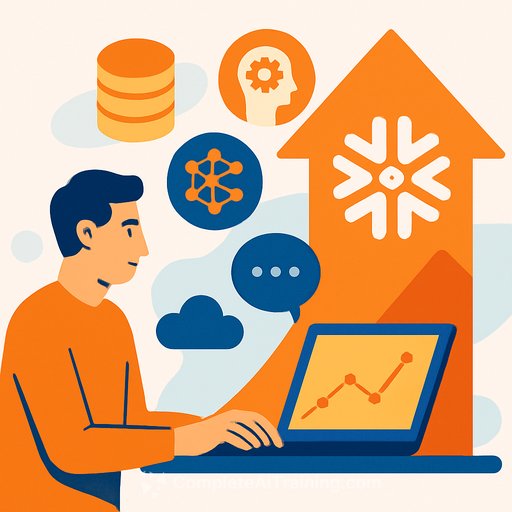Snowflake (SNOW) shifts from data warehouse to full data + AI platform
Snowflake Inc. (NYSE: SNOW) signaled a clear pivot on September 8: from pure data warehousing to a comprehensive data analysis and AI platform. Remarks at the Goldman Sachs Communicopia + Technology Conference 2025 reinforced this direction, positioning Snowflake to compete directly with larger platform players. For finance teams, the message is simple-expect broader workloads, tighter integration, and faster time to decision.
What changed
- Product scope is expanding with Snowflake Intelligence and AI SQL to make complex analysis accessible without an analyst in the loop.
- Transactional data gets a boost via the Crunchy Data acquisition, improving the ability to host and work with operational datasets alongside analytics.
- The platform continues to run across major clouds, simplifying governance and sharing for multi-cloud enterprises.
- Workflows that once required BI teams can move closer to business users, accelerating revenue and margin analytics.
Why finance teams should care
- Faster sales and margin visibility: natural-language queries against unified data can compress reporting cycles and forecast updates.
- Lower cost-to-insight: fewer handoffs between data engineering, analytics, and FP&A for recurring questions.
- Unified controls: consistent governance across clouds reduces audit friction and data sprawl.
- Operational + analytical convergence: transactional context improves pricing, inventory, and working-capital decisions.
Platform snapshot
Snowflake remains a fully managed, cloud-native data platform spanning storage, engineering, analytics, AI, and application development. It enables secure data sharing across cloud providers and aims to support both traditional BI and AI-assisted workflows in a single environment.
Competitive position
Snowflake is pushing to be the neutral data and AI layer across hyperscalers. The bet: cross-cloud data sharing, governed access, and AI-assisted querying will keep workloads on-platform and increase consumption. Execution on AI features and transactional capabilities will determine how far it can stretch beyond its warehousing roots.
Key metrics to track
- Consumption growth by workload (AI-assisted queries, app development, and transactional use cases).
- Large-customer expansion and multi-cloud adoption rates.
- AI feature usage (e.g., AI SQL share of queries) and attach to core contracts.
- Gross margin trajectory as AI services scale.
Risks
- Direct competition from hyperscalers and independent AI databases.
- Integration and performance risks as transactional and analytical workloads converge.
- Uncertain monetization of new AI features relative to compute and storage costs.
Investment view
SNOW has long-term potential as it pivots into data + AI, with clear product signals supporting the strategy. That said, some AI names may offer greater near-term upside with less downside risk. If you're hunting for an extremely undervalued AI stock poised to benefit from Trump-era tariffs and onshoring, see our free report on the best short-term AI stock.
What to watch next
- Product roadmap updates and customer case studies tied to Snowflake Intelligence and AI SQL.
- Evidence that Crunchy Data capabilities are driving net-new transactional workloads.
- Pricing and packaging for AI features and the impact on net revenue retention.
For primary sources and event context, see Snowflake's investor materials and the Goldman Sachs conference page:
Snowflake Investor Relations
Goldman Sachs Communicopia + Technology Conference
If you lead finance transformation, these AI tool lists can help map capability gaps and quick wins:
Top AI tools for finance
This content is for information only and not investment advice.
Your membership also unlocks:






